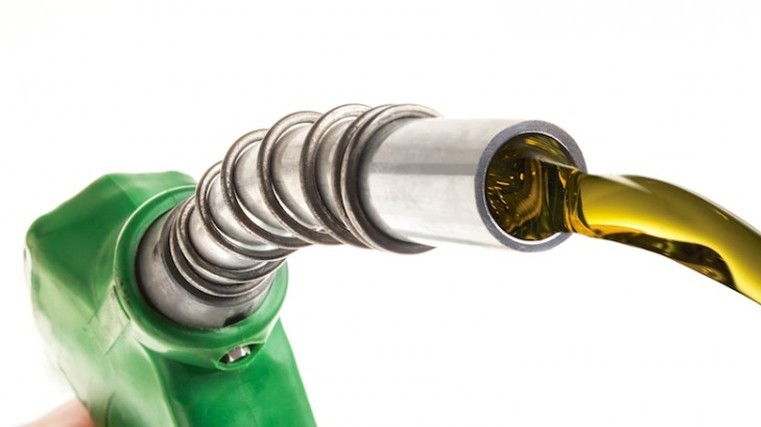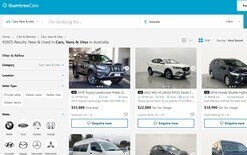Plans to ban ICE imports ‘premature’

An industry association suggests ongoing talk of banning internal combustion engine (ICE) vehicles may be premature if synthetic fuels can be produced at scale.
The Motor Industry Association (MIA) has raised the point with the Ministry for the Environment as part of its submission on an emissions reduction plan (ERP) discussion document.
It also recommends any ban on ICE vehicles lag equivalent action in source manufacturing countries by two years.
The government has gathered feedback through the ministry that will be used to shape its first ERP, which is set to be released in May 2022.
Cutting transport emissions is set to feature heavily, with the discussion document raising the prospect of setting a maximum carbon dioxide (CO2) limit for ICE vehicles, reducing the average distance travelled by cars and light vehicles, and producing a national electric vehicle (EV) infrastructure plan.
There is also a target to make 30 per cent of the light-vehicle fleet zero emissions by 2035, and the Climate Change Commission has called on the government to ban imports of new and used petrol cars as early as 2030.
However, the MIA says in its submission that the focus of government policies to cut transport emissions should be on “reducing or eliminating the use of hydrocarbon fuels rather than the technology that provides motive power”.
“Discussion of ICE bans is premature if synthetic fuel can be produced at scale. The objective is to reduce emissions and solutions should be technology-agnostic,” it adds.
“Any future ban on the use of ICEs would reduce choice and may not be practical for all vehicle classes where there are few or no low-emissions alternatives.
“If second-generation biofuels and synthetic fuels can be locally produced in sufficient quantity and at reasonable cost from renewable energy – something we have in plenty – this could offer great potential for the progressive reduction of CO2 emissions from the existing fleet due to being fully compatible with any ICE vehicle, whilst utilising the existing and proven refuelling infrastructure.”
The MIA describes synthetic fuels such as e-fuel as the “most powerful greenhouse gas reduction initiative for transport in the short term”.
It recommends the government invest in the development at scale of renewable synthetic fuels, and for objectives to be set to accelerate the domestic production of such fuels.
The association is also calling for similar commitments to be made on hydrogen production and refuelling infrastructure.
‘Bold’ target
The MIA labels the goal for zero-emissions vehicles to make up nearly one-third of our light fleet by 2035 as “bold” and predicts it may run into difficulties because car manufacturers do not produce vehicles specifically for our “tiny” market.
It adds concerns New Zealand will become a dumping ground for ICE vehicles unless it introduces tougher rules – an issue raised by Michael Wood, Minister of Transport, among others – are baseless.
“Less than 0.17 per cent of vehicles manufactured in any one year end up in the New Zealand new-vehicle market,” the MIA’s submission explains.
“New cars sold in New Zealand are made for the Australasian – read Australian – or Oceania market, which makes up about two per cent of the total world market. Our major source markets for new cars are Japan, followed by Thailand, Europe and South Korea.
“Consequently, as these source countries introduce ICE bans, then New Zealand will be able to follow suit as they will cease making them.
“There is not the likelihood that these countries will continue to make ICEs just for our small market and thus ‘dump’ them here.”
As a result, the MIA warns New Zealand will only be able to introduce the same type of bans as manufacturing countries if there is a delayed timeline of two years to allow for stock-order timeframes and product planning for replacement stock.
“For example, if Europe introduces a ban on all ICE technology from 2035, then the MIA proposes that 2037 could be the deadline for the equivalent ban in NZ.”
It goes on to point out New Zealand’s small market size and connection with Australia, along with our right-hand-drive orientation, also puts limits on access to EVs.
“New Zealand is a non-priority market for manufacturers and local distributors are experiencing a rationing of supply due to global demand and prioritisation for other, larger markets, which is expected to remain a feature of the automotive market for several years,” it says.
Introducing standards ahead of Australia will add to the problem because “New Zealand will struggle to source these vehicles as it is not economically viable for manufacturers to homologate some models for NZ due to low volumes”.
The situation is made worse by supply constraints due to reduced logistic supply channels resulting from the Covid-19 pandemic, a microchip shortage, constraints on global battery supply and a potential shortage of magnesium used in the manufacture of car bodies.
A suggestion in the discussion document to set a maximum CO2 limit for individual light ICE-vehicle imports to tackle the highest emitting vehicles has also drawn opposition from the MIA.
It says the government’s clean car standard, which is due to be operational in 2022, aims to encourage the supply of lower-emissions vehicles and the average emissions target will reduce over time.
“An alternative policy could be a maximum CO2 limit, but not to operate both policies concurrently,” advises the MIA.
“In addition, such a policy would need to vary according to vehicle class, to recognise that some classes are larger and heavier and so will have larger engines.
“Moreover, it would restrict choice to impose a standard on classes where there are few if any lower-emissions options, such as utes where there aren’t even any hybrid options yet let alone BEV.”
Urban development
The MIA goes on to say it supports policies to accelerate the uptake of EVs, such as reviewing tax treatment, and scrappage incentives to support consumers to purchase lower-emissions vehicles.
It also calls for extra consideration to be given to the role e-motorcycles and scooters can play in changing the way people travel, particularly in urban areas, and to reduce transport emissions.
The government is aiming for a reduction in vehicle kilometres travelled by cars and light vehicles by 20 per cent by 2035 and also hopes to deliver cleaner travel options.
The MIA says while integrated transport networks are applicable to cities, they remain a longer-term solution and will not apply to areas outside most cities.
“In provincial New Zealand, the car will still be a crucial mode of transport for many, and in the medium-term that will mean ICE vehicles and hence there needs to be a focus on adopting cleaner liquid fuel to reduce emissions from the current fleet.
“That notwithstanding, the MIA believes electric motorcycles and mopeds could play a greater role as alternative low-emissions modes, and in shifting urban commuters away from cars.
“They are ideally suited to urban environments and short commuter trips and, unlike electric cars, we’re likely to see a faster transition to electric motorcycles and mopeds because there are no right-hand-drive supply constraints.”





